 Since each Sunday in March is devoted to profiling the "overlooked" actressing at the edges from each of the years under consideration for April -- (vote for April's Supporting Actress Sundays toward the top of the right column) -- the candidacy of 1967 brings StinkyLulu to this week's installment: a torrid, perverse cinematic sampling of Southern Gothic which (somewhat amazingly given StinkyLu's Tennessee Williams fetish) Lulu had never even heard of until sitting on a panel at an academented fandango last fall. StinkyLulu's co-panelist was theorizing about "the Asian bottom" and riffing on the extraordinary Anacleto, perhaps the sissiest Filipino houseboy character in all of U.S. cinema, and who dotes upon Miss Alison, the damaged southern belle (garden shears!) played by...
Since each Sunday in March is devoted to profiling the "overlooked" actressing at the edges from each of the years under consideration for April -- (vote for April's Supporting Actress Sundays toward the top of the right column) -- the candidacy of 1967 brings StinkyLulu to this week's installment: a torrid, perverse cinematic sampling of Southern Gothic which (somewhat amazingly given StinkyLu's Tennessee Williams fetish) Lulu had never even heard of until sitting on a panel at an academented fandango last fall. StinkyLulu's co-panelist was theorizing about "the Asian bottom" and riffing on the extraordinary Anacleto, perhaps the sissiest Filipino houseboy character in all of U.S. cinema, and who dotes upon Miss Alison, the damaged southern belle (garden shears!) played by...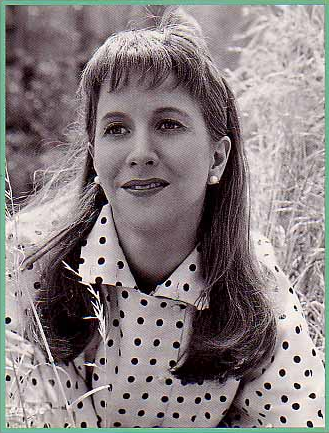

...Julie Harris in Reflections in a Golden Eye (1967).
approximately 20 minutes & 44 seconds on screen
12 scenes
19% of total film running time
Reflections in a Golden Eye is, quite simply, an extraordinary film. Not that it's especially good (it's not), nor that it's especially artful or pathbreaking (nope again). Rather, it's remarkable for simply being the big hot mess that it is.
John Huston's 1967 adaptation of the 1940 Carson McCullers novel, starring Elizabeth Taylor as an adulterous hellcat and Marlon Brando
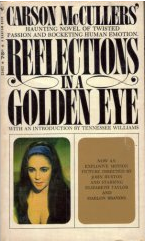 as a closeted military man, is a fascinating document of sexuality in U.S. commercial film. Basically, they couldn't have made this film a year or two earlier, and they wouldn't have needed to a year or two later. Add to that Huston's wild color stylization (desaturating the color to highlight only yellow, white and black tones, creating a somewhat legendary "golden" film that the studio only allowed screened for a week before re-releasing prints using conventional color process & which has been restored in the recent dvd release)? Well. Reflections in a Golden Eye shows studio big names/budgets colliding with the social and aesthetic upheavals of the 1960s in possibly unique ways. Garish. Gaudy. Gory. Soooo much a document of its historical moment.
as a closeted military man, is a fascinating document of sexuality in U.S. commercial film. Basically, they couldn't have made this film a year or two earlier, and they wouldn't have needed to a year or two later. Add to that Huston's wild color stylization (desaturating the color to highlight only yellow, white and black tones, creating a somewhat legendary "golden" film that the studio only allowed screened for a week before re-releasing prints using conventional color process & which has been restored in the recent dvd release)? Well. Reflections in a Golden Eye shows studio big names/budgets colliding with the social and aesthetic upheavals of the 1960s in possibly unique ways. Garish. Gaudy. Gory. Soooo much a document of its historical moment.Julie Harris plays Alison, the "delicate" wife of a military officer on one of the last U.S. cavalry outposts, somewhere in the South. Alison's husband (Brian Keith) is having a not-so-secret affair with the wife (Elizabeth Taylor) of his best friend, closest colleague and next door neighbor (Marlon Brando). The affair is mostly a matter of circumstance: Taylor's Leonora and Keith's Langdon don't do it from spite; they're just dang bored and horny because neither of their spouses will put out. For her part, Harris's Alison struggles with a long-duree post-partum depression (a child died either during or just after birth three years earlier) and Alison recently sliced off her nipples (yes, you read correctly) with a pair of garden shears.
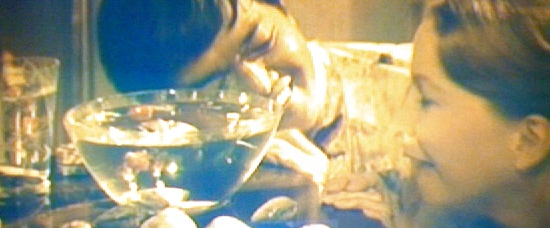 (You really have to hear Taylor's reading of that line to believe it.) So, as you might imagine, Alison's not really in the mood. Plus, she's got a swell girlfriend in her houseboy Anacleto, with whom she paints and gossips and stays up all night. As for Brando's Penderton, on the other hand, he's priggish, imperious, insufferable but mostly he won't put any to Taylor's Leonora because, in the language of the day, he's a "latent" homosexual.
(You really have to hear Taylor's reading of that line to believe it.) So, as you might imagine, Alison's not really in the mood. Plus, she's got a swell girlfriend in her houseboy Anacleto, with whom she paints and gossips and stays up all night. As for Brando's Penderton, on the other hand, he's priggish, imperious, insufferable but mostly he won't put any to Taylor's Leonora because, in the language of the day, he's a "latent" homosexual.An aside about Brando's Penderton:
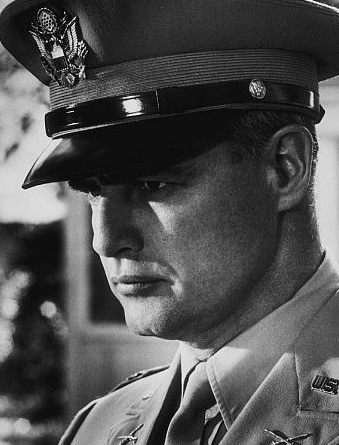 Brando gives an intense, if constipated, performance as Penderton. Vocally, he's all stunted and stifled. (Between Brando's Penderton and Ledger's Ennis Del Mar it might seem that such mumbling and word swallowing is symptomatic of repressed homosexuality). Behaviorally, Brando piles on the mannered idiosyncrasy in extra little scenelets, some poignant (caressing the incriminating treasures stashed in his strong box), some startling (slathering his wife's cold cream all over his face with manic glee).
Brando gives an intense, if constipated, performance as Penderton. Vocally, he's all stunted and stifled. (Between Brando's Penderton and Ledger's Ennis Del Mar it might seem that such mumbling and word swallowing is symptomatic of repressed homosexuality). Behaviorally, Brando piles on the mannered idiosyncrasy in extra little scenelets, some poignant (caressing the incriminating treasures stashed in his strong box), some startling (slathering his wife's cold cream all over his face with manic glee). 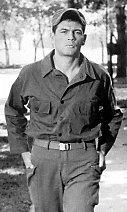 And, truly, it's hard not to see Brando's Penderton as Sayonara's Major Gruver all growed up. But, here, the object of Brando's forbidden desire is the astonishingly hot Robert Forster, in his bareassed film debut, as Private Williams. Forster's Williams flirts with Brando's infatuation just as brazenly as Hana-Ogi but stops just short of...well. Huston's smart to photograph Forster in ways that amplify his beauty while allowing him to remain unqualifiedly masculine, affirming that he's as odd a duck as the rest of them while not "queering" him too much. It's all uapologetically macho and homo at the same time...which remains surprising, frankly, in a mainstream film.
And, truly, it's hard not to see Brando's Penderton as Sayonara's Major Gruver all growed up. But, here, the object of Brando's forbidden desire is the astonishingly hot Robert Forster, in his bareassed film debut, as Private Williams. Forster's Williams flirts with Brando's infatuation just as brazenly as Hana-Ogi but stops just short of...well. Huston's smart to photograph Forster in ways that amplify his beauty while allowing him to remain unqualifiedly masculine, affirming that he's as odd a duck as the rest of them while not "queering" him too much. It's all uapologetically macho and homo at the same time...which remains surprising, frankly, in a mainstream film.Harris' Julie is, by some measures, the crazy one. But Harris's performance makes it clear that Alison's a loon in no small part because she's paying attention to what's going on. Harris's Alison is the only one who sees Forster's Williams hanging around. Harris's Alison also knows her husband's having an affair with Taylor's Leonora. But what's brilliant is that Harris is able to convey that Alison doesn't hate her husband so much for having the affair. She just hates that he's doing it with Leonora, whose basic disregard for certain principles of Southern propriety offends Alison to the core. And it's not until Harris's Alison catches the serviceman sniffing Leonora's lingerie that she goes over the edge...
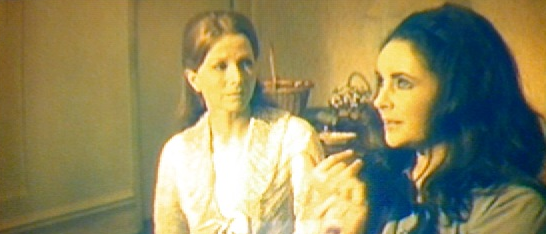 With Alison, Harris reinvents the stock character of the neurotic Southern damsel by honing in on Alison's myriad humiliations and tapping the anger there. Alison isn't crazy because she's delicate. No, Harris's Alison is mad -- in both senses of the term -- because of the gendered cruelties of the world in which she lives. In Harris's performance, Alison emerges not only as perhaps the first full-fledged "fag hag" in US cinema but also as a kind of pre-feminist cautionary tale, embodying a particularly Southern variation of the Feminine Mystique.
With Alison, Harris reinvents the stock character of the neurotic Southern damsel by honing in on Alison's myriad humiliations and tapping the anger there. Alison isn't crazy because she's delicate. No, Harris's Alison is mad -- in both senses of the term -- because of the gendered cruelties of the world in which she lives. In Harris's performance, Alison emerges not only as perhaps the first full-fledged "fag hag" in US cinema but also as a kind of pre-feminist cautionary tale, embodying a particularly Southern variation of the Feminine Mystique.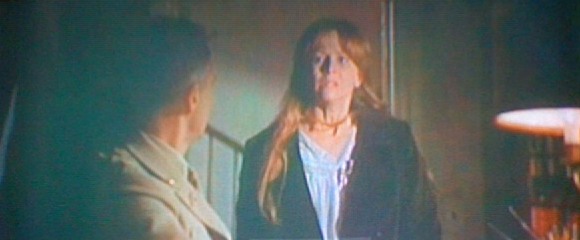 Harris's performance reaches deep into Alison to retrieve a fully realized, human characterization out of one of the most cliched Southern Gothic stock figures. Harris's Alison is a remarkable accomplishment, a flash of clarity and humanity in the curiously stewed Reflections in a Golden Eye.
Harris's performance reaches deep into Alison to retrieve a fully realized, human characterization out of one of the most cliched Southern Gothic stock figures. Harris's Alison is a remarkable accomplishment, a flash of clarity and humanity in the curiously stewed Reflections in a Golden Eye.Previously in StinkyLulu's warm-up "overlooked" series:
Mary Alice in Sparkle (1976)
Up next:
Gale Sondergaard in The Letter & The Mark of Zorro (1940)
Mary Alice in Sparkle (1976)
Up next:
Gale Sondergaard in The Letter & The Mark of Zorro (1940)

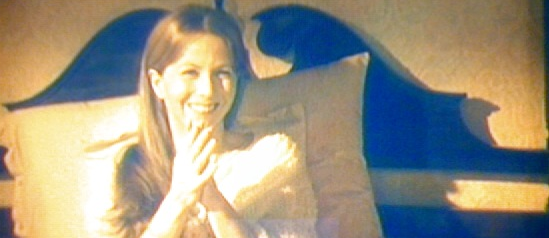

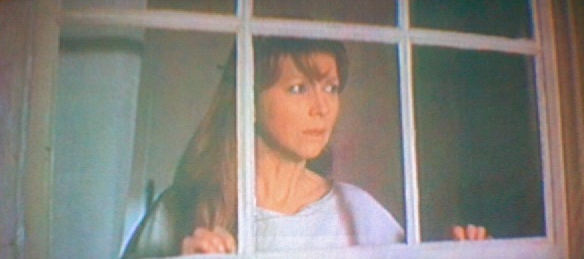
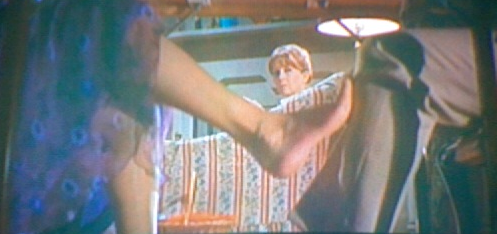
No comments:
Post a Comment